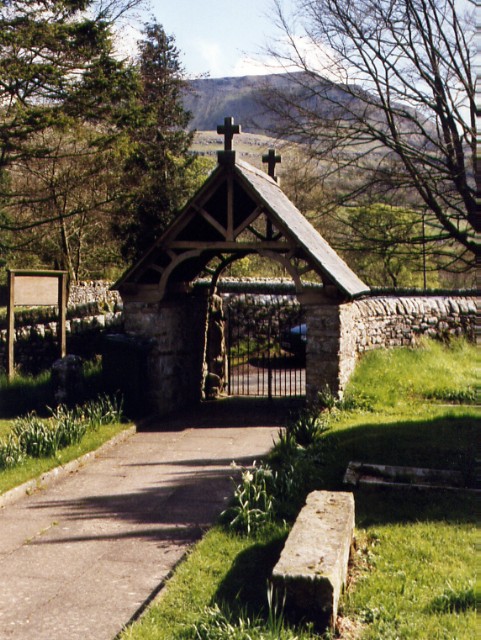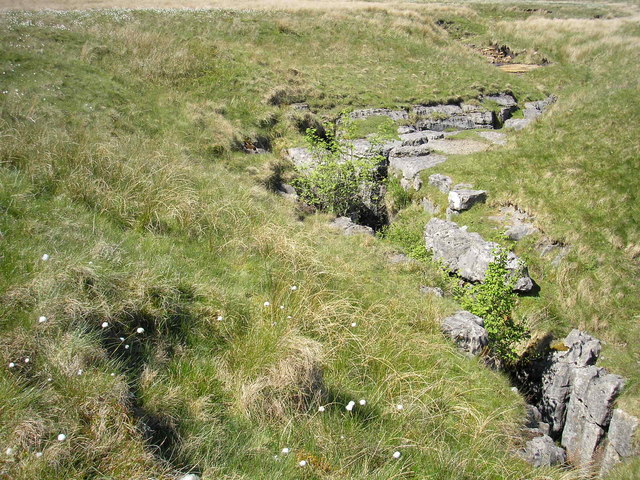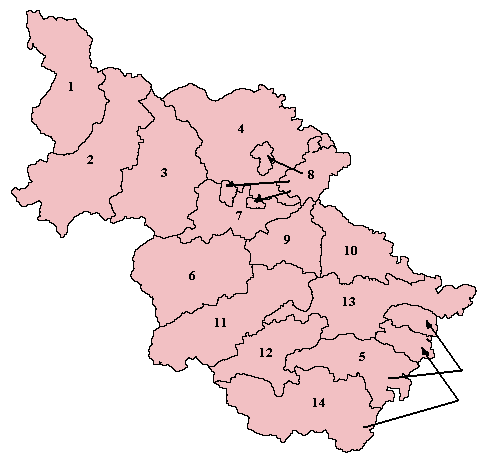|
Chapel-le-Dale
Chapel-le-Dale is a hamlet in the civil parish of Ingleton, North Yorkshire, England. It is in the Yorkshire Dales and was previously in the West Riding of Yorkshire. History The hamlet is situated on the B6255 road between Ingleton and Ribblehead near to the Ribblehead Viaduct. The name derives from Old French and literally means ''Chapel in the valley''. It was first recorded as ''Chappell ith Dale'' in 1677. Historically, the hamlet, and its parish, were both in the Wapentake of Ewcross and up until 1974, they were in the West Riding of Yorkshire. The hamlet is in close proximity to Ingleborough and Whernside and there are several potholes in the vicinity, the best known being Great Douk Cave. There is a pub in the village, ''The Old Hill Inn'', which is used as a starting and ending point for various walks on Whernside or Ingleborough. The source of the River Doe is nearby. There is a church in the hamlet (The Church of St Leonard) which is now a grade II listed buildin ... [...More Info...] [...Related Items...] OR: [Wikipedia] [Google] [Baidu] |
Ingleton, North Yorkshire
Ingleton is a village and civil parish in the Craven district of North Yorkshire, England. The village is from Kendal and from Lancaster on the western side of the Pennines. It is from Settle. The River Doe and the River Twiss meet to form the source of the River Greta, a tributary of the River Lune. The village is on the A65 road and at the head of the A687. The B6255 takes the south bank of the River Doe to Ribblehead and Hawes. All that remains of the railway in the village is the landmark Ingleton Viaduct.OS map 98, Wensleydale and Upper Wharfdale. Arthur Conan Doyle was a regular visitor to the area and was married locally, as his mother lived at Masongill from 1882 to 1917 (see notable people). It has been claimed that there is evidence that the inspiration for the name Sherlock Holmes came from here. Whernside, north-north-east of the village, one of the Yorkshire Three Peaks, is the highest point in the parish at . There are major quarries within the paris ... [...More Info...] [...Related Items...] OR: [Wikipedia] [Google] [Baidu] |
Great Douk Cave
Great Douk Cave is a shallow cave system lying beneath the limestone bench of Ingleborough in Chapel-le-Dale, North Yorkshire, England. It is popular with beginners and escorted groups, as it offers straightforward caving, and it is possible to follow the cave from where a stream emerges at a small waterfall to a second entrance close to where it sinks further up the hill. It lies within the Ingleborough Site of Special Scientific Interest. Description The main entrance is in a large collapsed depression, at the bottom of which is the scaffolded entrance to Great Douk Pot, and at the south-eastern end is the obvious entrance to the cave from which a waterfall issues. The cave can be entered by climbing up the waterfall, or crawling through an open bedding above. To the left, a low passage leads to where the Southerscales Pot stream flows out of a short sump. Straight on is easy walking, passing under Little Douk Pot, an alternative pothole entrance, and beyond beneath ano ... [...More Info...] [...Related Items...] OR: [Wikipedia] [Google] [Baidu] |
Ribblehead
Ribblehead is the area of moorland at the head of the River Ribble in the area known as Ribblesdale, in the Yorkshire Dales National Park, England. Ribblehead is most notable for Ribblehead railway station and Ribblehead Viaduct on the Settle to Carlisle railway. It is in North Yorkshire with its nearest town being Ingleton. It has some accommodation catering mainly for hikers and a small local population. It is also a point on the Dales Way and Yorkshire Three Peaks walks, in sight of major local peaks including Ingleborough and Whernside. History Roman road The Roman road across Batty Moss crosses the railway line just north of Ribblehead station, just before the viaduct begins and past the Station Inn. The modern B6255 road follows its line. Plans to update Cam High Road, a smaller Roman road, to allow for commercial forestry are being opposed. Viking farmstead Archaeological research revealed the presence of a Scandinavian farmstead, with three large buildings aroun ... [...More Info...] [...Related Items...] OR: [Wikipedia] [Google] [Baidu] |
Ribblehead Viaduct
The Ribblehead Viaduct or Batty Moss Viaduct carries the Settle–Carlisle railway across Batty Moss in the Ribble Valley at Ribblehead, in North Yorkshire, England. The viaduct, built by the Midland Railway, is north-west of Skipton and south-east of Kendal. It is a Grade II* listed structure. Ribblehead Viaduct is the longest and the third tallest structure on the Settle–Carlisle line. The viaduct was designed by John Sydney Crossley, chief engineer of the Midland Railway, who was responsible for the design and construction of all major structures along the line. The viaduct was necessitated by the challenging terrain of the route. Construction began in late 1869. It necessitated a large workforce, up to 2,300 men, most of whom lived in shanty towns set up near its base. Over 100 men lost their lives during its construction. The Settle to Carlisle line was the last main railway in Britain to be constructed primarily with manual labour. By the end of 1874, the last sto ... [...More Info...] [...Related Items...] OR: [Wikipedia] [Google] [Baidu] |
Yorkshire Dales
The Yorkshire Dales is an upland area of the Pennines in the Historic counties of England, historic county of Yorkshire, England, most of it in the Yorkshire Dales National Park created in 1954. The Dales comprise river valleys and the hills rising from the Vale of York westwards to the hilltops of the Pennine Drainage divide, watershed. In Ribblesdale, Dentdale and Garsdale, the area extends westwards across the watershed, but most of the valleys drain eastwards to the Vale of York, into the River Ouse, Yorkshire, Ouse and the Humber. The extensive limestone cave systems are a major area for caving in the UK and numerous walking trails run through the hills and dales. Etymology The word ''Dale (landform), dale'', like ''dell'', is derived from the Old English word ''dæl''. It has cognates in the North Germanic languages, Nordic/Germanic languages, Germanic words for valley (''dal'', ''tal''), and occurs in valley names across Yorkshire and Northern England. Usage here may have ... [...More Info...] [...Related Items...] OR: [Wikipedia] [Google] [Baidu] |
River Doe
The River Doe is a river in North Yorkshire, England. The river's source is near God's Bridge close to the settlement of Chapel-le-Dale and flows through Twisleton in a south-westerly direction to Ingleton, where it meets the River Twiss to form the River Greta. The river forms part of the River Lune system that flows into the Irish Sea. Course The source of the river is found at a place named God's Bridge where Chapel Beck disappears underground and the Doe begins. The river flows south west, fed by a number of small unnamed springs on the valley sides. The first named tributary is Light Water Spring which feeds north west into the river near a disused quarry. Near Twisleton Dale House, the river can be crossed by some stepping stones at a fording point as well as some later near the disused granite quarry. Further down stream near Twisleton Hall there are another set of stepping stones at a fording point just above Beezley Falls. After flowing under a footbridge, there ar ... [...More Info...] [...Related Items...] OR: [Wikipedia] [Google] [Baidu] |
Ingleborough
Ingleborough () is the second-highest mountain in the Yorkshire Dales, England. It is one of the Yorkshire Three Peaks (the other two being Whernside and Pen-y-ghent), and is frequently climbed as part of the Three Peaks walk. A large part of Ingleborough is designated as a Site of Special Scientific Interest and National Nature Reserve and is the home of a new joint project, Wild Ingleborough, with aims to improve the landscape for wildlife and people. Name The first element of the name "Ingleborough" has been variably explained as a Scots term for 'beacon, fire', an Old Danish term meaning 'English' or a derivative of Old English ''ing'', 'peak'. The second element is derived from the Old English word ''burh'', meaning "a fortified place"; in this case, a hill fort. The summit plateau of Ingleborough is encircled by the remains of a massive stone rampart, containing the foundations of Iron Age huts. Geography Ingleborough is in the south-western corner of the Yorkshi ... [...More Info...] [...Related Items...] OR: [Wikipedia] [Google] [Baidu] |
North Yorkshire
North Yorkshire is the largest ceremonial counties of England, ceremonial county (lieutenancy area) in England, covering an area of . Around 40% of the county is covered by National parks of the United Kingdom, national parks, including most of the Yorkshire Dales and the North York Moors. It is one of four counties in England to hold the name Yorkshire; the three other counties are the East Riding of Yorkshire, South Yorkshire and West Yorkshire. North Yorkshire may also refer to a non-metropolitan county, which covers most of the ceremonial county's area () and population (a mid-2016 estimate by the Office for National Statistics, ONS of 602,300), and is administered by North Yorkshire County Council. The non-metropolitan county does not include four areas of the ceremonial county: the City of York, Middlesbrough, Redcar and Cleveland and the southern part of the Borough of Stockton-on-Tees, which are all administered by Unitary authorities of England, unitary authorities. ... [...More Info...] [...Related Items...] OR: [Wikipedia] [Google] [Baidu] |
Navvies
Navvy, a clipping of navigator ( UK) or navigational engineer ( US), is particularly applied to describe the manual labourers working on major civil engineering projects and occasionally (in North America) to refer to mechanical shovels and earth moving machinery. The term was coined in the late 18th century in Great Britain when numerous canals were being built, which were also sometimes known as "navigations", or "eternal navigations", intended to last forever. Nationalities A study of 19th-century British railway contracts by David Brooke, coinciding with census returns, conclusively demonstrates that the great majority of navvies in Britain were English. He also states that "only the ubiquitous Irish can be regarded as a truly international force in railway construction,"Brooke (1983). Page 167. but the Irish were only about 30% of the navvies. By 1818, high wages in North America attracted many Irish workers to become a major part of the workforce on the construction of the ... [...More Info...] [...Related Items...] OR: [Wikipedia] [Google] [Baidu] |
Grade II Listed
In the United Kingdom, a listed building or listed structure is one that has been placed on one of the four statutory lists maintained by Historic England in England, Historic Environment Scotland in Scotland, in Wales, and the Northern Ireland Environment Agency in Northern Ireland. The term has also been used in the Republic of Ireland, where buildings are protected under the Planning and Development Act 2000. The statutory term in Ireland is " protected structure". A listed building may not be demolished, extended, or altered without special permission from the local planning authority, which typically consults the relevant central government agency, particularly for significant alterations to the more notable listed buildings. In England and Wales, a national amenity society must be notified of any work to a listed building which involves any element of demolition. Exemption from secular listed building control is provided for some buildings in current use for worship, ... [...More Info...] [...Related Items...] OR: [Wikipedia] [Google] [Baidu] |
Ewcross
The historical area of Ewecross or Ewcross is a district in the West Riding of Yorkshire, England. It included the parishes of Bentham, Clapham, Horton in Ribblesdale and Sedbergh and parts of Thornton in Lonsdale. Ewcross was split from the Staincliffe and Ewcross wapentake in the nineteenth century. In modern times the name has been used for one of the area deaneries under the Archdeacon of Richmond and Craven in the Anglican Diocese of Leeds. In 2017 it amalgamated with Bowland to become the Deanery of Bowland and Ewecross. Since 1974 the area of the wapentake has been divided between the counties of North Yorkshire and Cumbria Cumbria ( ) is a ceremonial and non-metropolitan county in North West England, bordering Scotland. The county and Cumbria County Council, its local government, came into existence in 1974 after the passage of the Local Government Act 1972. Cumb .... References Wapentakes of the West Riding of Yorkshire Ancient subdivisions of Yorkshire ... [...More Info...] [...Related Items...] OR: [Wikipedia] [Google] [Baidu] |







